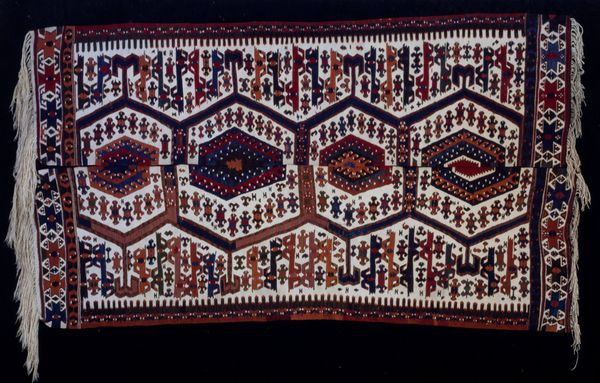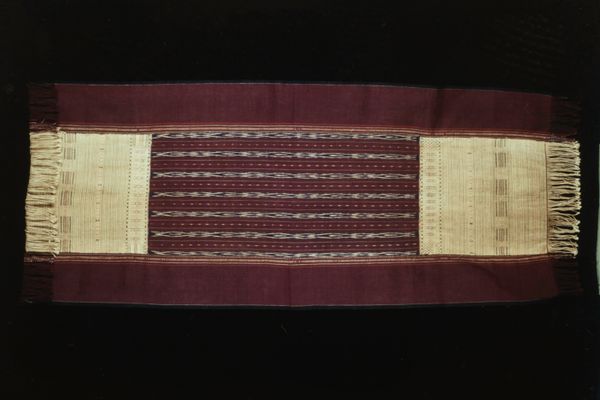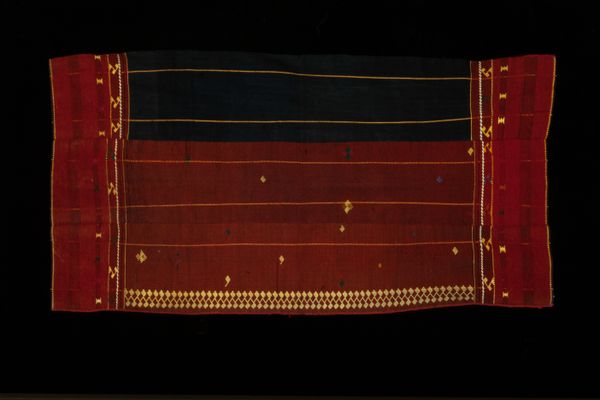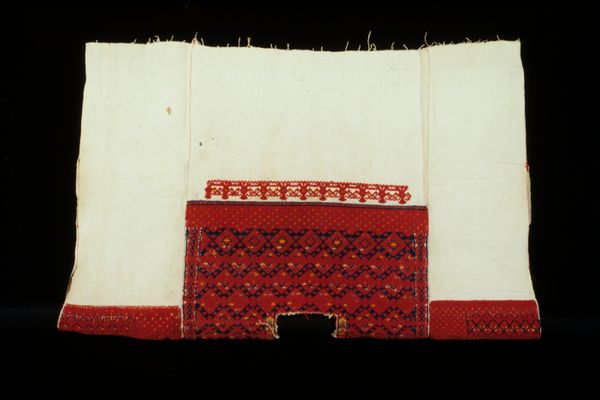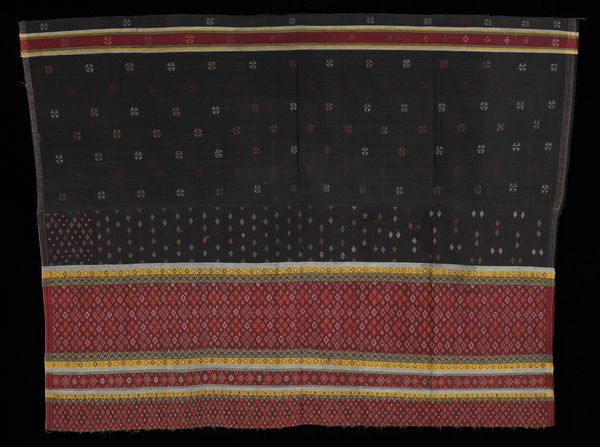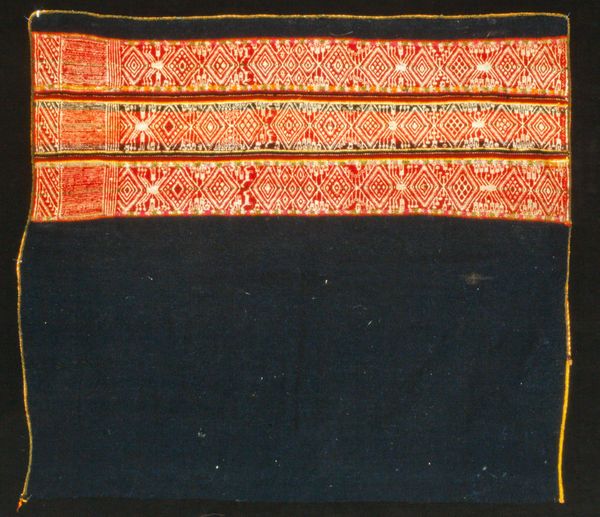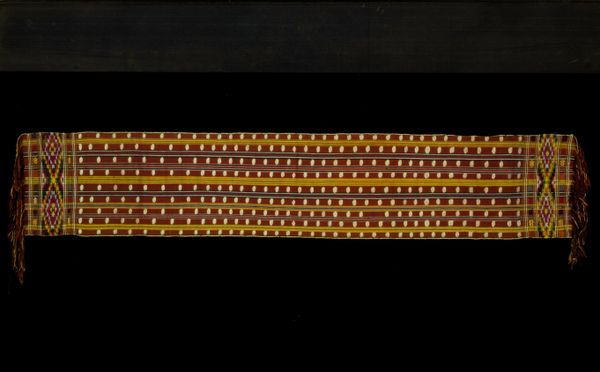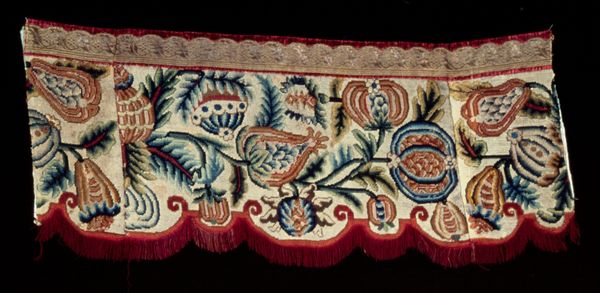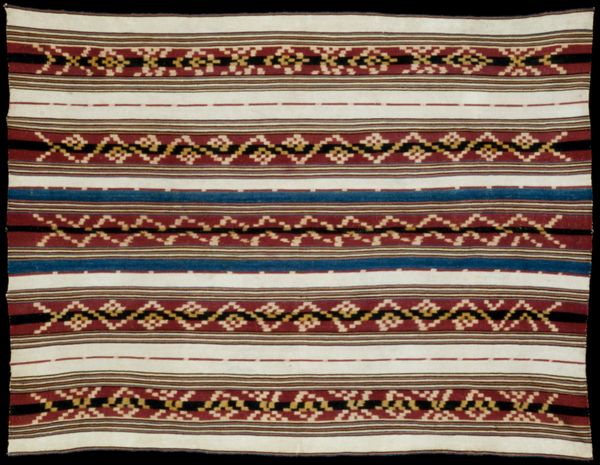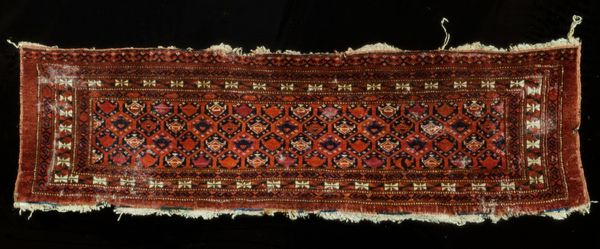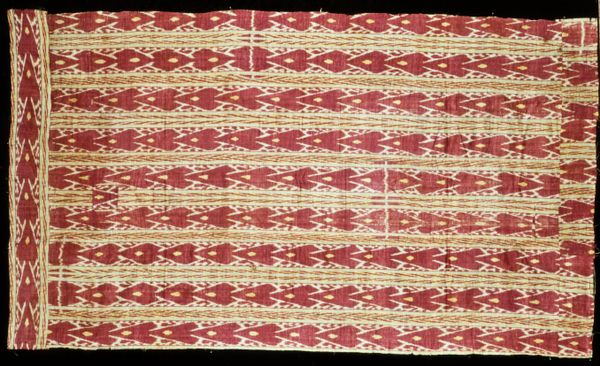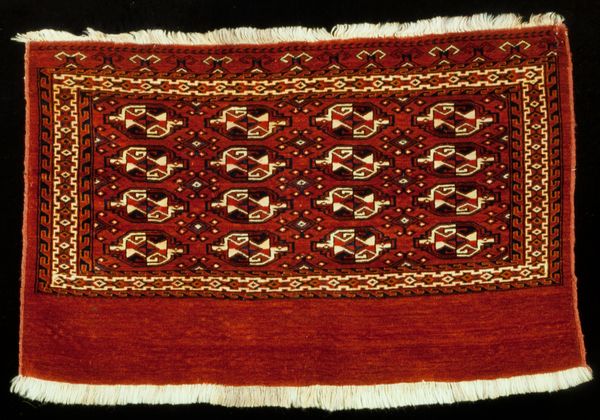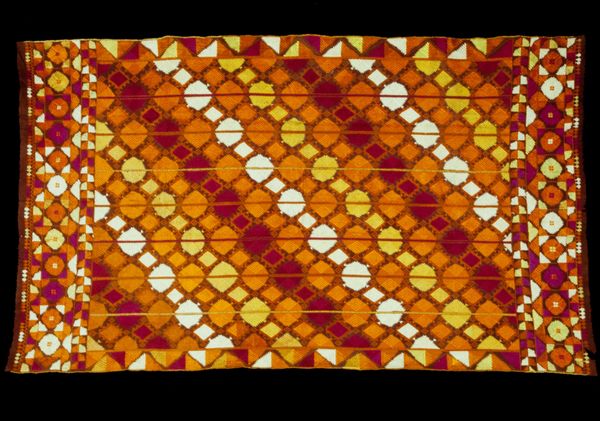
Woman's wedding skirt (gaghra) c. 19th century
0:00
0:00
fibre-art, textile, cotton
#
fibre-art
#
textile
#
geometric pattern
#
ethnic pattern
#
geometric
#
architecture
#
cotton
Dimensions: 171 x 33in. (434.3 x 83.8cm)
Copyright: Public Domain
Curator: This piece is identified as a woman's wedding skirt, a gaghra, created by the Bhansali or Lohana communities around the 19th century. Editor: It's strikingly beautiful, isn't it? The precise geometric patterning is almost mesmerizing, and the saturated red is really gorgeous! It’s so pleasing to see this type of geometry embedded in fibre art, which can be a much less strict domain. Curator: Absolutely. It's part of a larger history of textile production within those communities, isn’t it? Wedding skirts like these served as potent symbols of status and belonging. You see elements of cotton and silk fibres combined to generate some fascinating textures too. Editor: The use of silk is significant, I imagine? Was silk a traded commodity, perhaps reflecting economic influence? Curator: Yes, indeed. Silk threads often indicated a level of wealth and access to wider trade networks, highlighting how even seemingly domestic items were embedded in much larger socioeconomic and geopolitical systems. The materiality speaks volumes about available resources and societal values attributed to craft. Editor: Considering the elaborate ornamentation and what looks like intensive labor based on the density of the design, I wonder who actually crafted this? What role did the maker(s) have in their communities and how does this skirt reflect this specific socio-economic setting? Curator: That’s very important to point out. Textile production, particularly for wedding garments, would likely have involved skilled artisans working within a well-established system of apprenticeship and patronage. The social capital involved in the process makes the skirt function as more than an object for wear: it operates as a container for narratives around communal participation and specialized skills. Editor: Seeing it within that historical context really enhances its richness, doesn’t it? It's so easy to overlook the stories that material objects hold. I'll never look at a wedding dress or ceremonial clothing the same way. Curator: Exactly, by paying attention to the hands that make things, and the broader networks surrounding production, we gain such a clearer understanding of art's role within society.
Comments
No comments
Be the first to comment and join the conversation on the ultimate creative platform.
